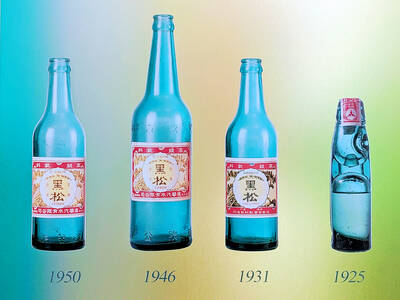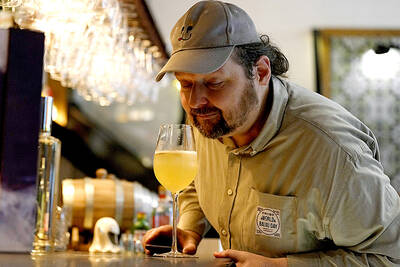There was great excitement among opera fans earlier this year when the rumor got around that Deutsche Grammophon was about to issue the New York Metropolitan Opera’s Falstaff from 1992 on DVD. This was a legendary production, with such stars as Mirella Freni, Marilyn Horne and Barbara Bonney, and Paul Plishka in the title role. It duly appeared in July, and confirmed the stellar reputation of the performances it records.
Other great names grace the enterprise. James Levine conducts, Brian Large is in charge of the video recording, and the stage production is by Franco Zeffirelli.
Zeffirelli’s New York staging was old even in 1992, but then that is the way with opera. New productions get created and run for maybe 10 performances over a month or so. When the time comes for a revival of the opera with different singers, there’s rarely a question of commissioning new sets, let alone costumes — a notoriously expensive business. And in the case of Zeffirelli’s Falstaff, little would have been achieved. His name, after all, was a selling-point in itself.
James Levine as conductor is also a huge asset. Not only is he unfailingly faithful to any composer’s original intentions, but he also delivers passionately committed renditions recorded with hi-tech fidelity. And Brian Large has long been the one to beat for video versions of live opera performances.
Nothing fails to please in this magnificent DVD. Plishka gives a superb reading of Falstaff himself, as good an actor as he is vigorous a singer. Freni is unimprovable as Alice Ford, and though Marilyn Horne is really too great an artist to undertake as modest a role as Mistress Quickly, she still enters into the comic spirit of the occasion and gives her all. Bonney is sumptuous in the lovely music Verdi wrote for Nannetta, while Frank Lopardo and Bruno Pola are more than adequate as Fenton and Ford, respectively.
Falstaff is a connoisseur’s piece, musically subtle with a quick-silver vitality far removed from the sturdy melodramatics of Verdi’s middle years, wonderful though those are too. This sublime version does it justice in every way — as the New York Times commented at the time, the entire undertaking represented “a milestone in the history of operatic production in this city.” It’s wonderful to have it available at last on DVD, with a BluRay option and subtitles in Italian, English, German, French, Spanish and Chinese.
The Zeffirelli production climaxes, as all productions of this opera must, in the last scene, set
at night in Windsor Forest. The
stage is ablaze with fireworks and multi-colored lights, plus perhaps 200 performers.
This month I also much enjoyed the DGM DVD of Karajan conducting the Brahms symphonies with the Berlin Philharmonic back in 1973, at the peak of his career. The picture is highly traditional, mostly Karajan himself in close-up, plus various featured soloists, also in close-up, from time to time. The sound, too, is slightly boxed-in, but very forceful nonetheless. Karajan had the power to raise performances to an ever higher level simply by his participation, and this plus the stature of Brahms’ four ever-rich symphonies — none of them inferior to any of the others — makes this a very attractive set of two DVDs.
Is Andre Rieu getting cynical, taken over ever so slightly by his own organizational machine? Universal Music in Taiwan has
re-issued an old Rieu concert, Andre Rieu Live at the Royal Albert Hall, unavailable for the last four years. Visually the concert is all colored lights and tinted hair, a confection of pink and blue. But even back then it was possible to catch a sober look is those ever-smiling eyes, as if Rieu were carefully checking everything was going according to plan, that the plants in the audience were leading the dancing in the aisles as arranged, and that the right kind of hilarity was going to take over at just the appropriate moment.
Lastly, this month I belatedly discovered the DVD of Tosca in the film version from Benoir Jacquot. It may not please purists — there are moments when the characters are heard speaking their words rather than singing them, and the church procession that normally concludes Act One so memorably doesn’t feature at all. But all in all I found it a powerful experience.
Antonio Pappano conducts the Royal Covent Garden orchestra and chorus in London’s famous Abbey Road studios, and you see them from time to time, filmed in monochrome, and then return to the drama itself taking place in color. Angela Gheorghiu proves far more powerful as Tosca than you might have expected, her voice more mellow and rounded than previously. Roberto Alagna, too, is a very strong Cavaradossi, while Ruggero Raimondi makes an openly sexual Scarpia.
Each act is slightly less good than the one before, but that’s the case with Puccini’s original. Nothing is as lovely as Act One where the impending tragedy is still mixed with the sense of possibility, and the joyful hopes of young love, before politics intervenes.

Behind a car repair business on a nondescript Thai street are the cherished pets of a rising TikTok animal influencer: two lions and a 200-kilogram lion-tiger hybrid called “Big George.” Lion ownership is legal in Thailand, and Tharnuwarht Plengkemratch is an enthusiastic advocate, posting updates on his feline companions to nearly three million followers. “They’re playful and affectionate, just like dogs or cats,” he said from inside their cage complex at his home in the northern city of Chiang Mai. Thailand’s captive lion population has exploded in recent years, with nearly 500 registered in zoos, breeding farms, petting cafes and homes. Experts warn the

The unexpected collapse of the recall campaigns is being viewed through many lenses, most of them skewed and self-absorbed. The international media unsurprisingly focuses on what they perceive as the message that Taiwanese voters were sending in the failure of the mass recall, especially to China, the US and to friendly Western nations. This made some sense prior to early last month. One of the main arguments used by recall campaigners for recalling Chinese Nationalist Party (KMT) lawmakers was that they were too pro-China, and by extension not to be trusted with defending the nation. Also by extension, that argument could be

Aug. 4 to Aug. 10 When Coca-Cola finally pushed its way into Taiwan’s market in 1968, it allegedly vowed to wipe out its major domestic rival Hey Song within five years. But Hey Song, which began as a manual operation in a family cow shed in 1925, had proven its resilience, surviving numerous setbacks — including the loss of autonomy and nearly all its assets due to the Japanese colonial government’s wartime economic policy. By the 1960s, Hey Song had risen to the top of Taiwan’s beverage industry. This success was driven not only by president Chang Wen-chi’s

The centuries-old fiery Chinese spirit baijiu (白酒), long associated with business dinners, is being reshaped to appeal to younger generations as its makers adapt to changing times. Mostly distilled from sorghum, the clear but pungent liquor contains as much as 60 percent alcohol. It’s the usual choice for toasts of gan bei (乾杯), the Chinese expression for bottoms up, and raucous drinking games. “If you like to drink spirits and you’ve never had baijiu, it’s kind of like eating noodles but you’ve never had spaghetti,” said Jim Boyce, a Canadian writer and wine expert who founded World Baijiu Day a decade